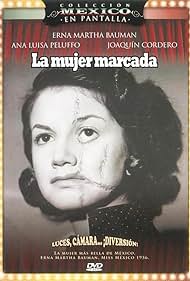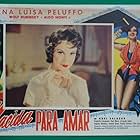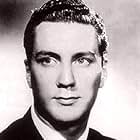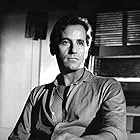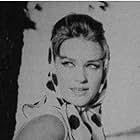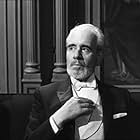A lonely homeless woman, is seeking revenge from the ruthless man who killed her family and left her with a disfigured face.A lonely homeless woman, is seeking revenge from the ruthless man who killed her family and left her with a disfigured face.A lonely homeless woman, is seeking revenge from the ruthless man who killed her family and left her with a disfigured face.
Photos
Erna Martha Bauman
- Alicia
- (as Erna Marta)
Enrique García Álvarez
- Doctor Luna
- (as Enrique G. Álvarez)
Rosina Navarro
- Mini
- (as Rosalía Navarro)
Gregorio Acosta
- Detective de policía
- (uncredited)
Ricardo Adalid
- Don Alberto
- (uncredited)
León Barroso
- Tendero asesinado
- (uncredited)
Manuel Casanueva
- Padre de Ana
- (uncredited)
Arturo Castro 'Bigotón'
- Jefe policía
- (uncredited)
José Chávez
- Camionero
- (uncredited)
Ángel Di Stefani
- Detective de policía
- (uncredited)
Emilio Garibay
- Policía
- (uncredited)
Jesús Gómez Murguía
- Detective de policía
- (uncredited)
Blanca Marroquín
- Pacienta de Dr. Luna
- (uncredited)
Storyline
Did you know
- ConnectionsVersion of Il était une fois (1933)
- SoundtracksEncadenados
Written by Arturo Bris
Featured review
Of the Spanish filmmakers who migrated to Mexico during the civil war, the most famous was Luis Buñuel, but others, such as Luis Alcoriza, Carlos Velo, Juan Orol and Miguel Morayta Martínez, also had successful careers. Unlike Buñuel, whose artistic hallmark was more prominent than his technical or narrative efficiency, Morayta was more an artisan than author, his effectiveness allowed him to bring the product to fruition, and he moved from one genre to another with dexterity. I have never watched his films for academic purposes, but I recently saw his film "The Marked Woman" and found it an interesting experience. It is an incursion into "noir" melodrama that has enough merits to stand out in his abundant filmography.
Ana Luisa Peluffo plays a beautiful woman with half her face disfigured by a bad surgeon, after she was in a car accident. This "marked woman" will go in 97 minutes through a physical, emotional and professional transformation similar to other films, but with some attractive variants. Within the framework of melodrama there is an elaborate development of her character (Ana first, Lucy Morán afterwards), motivated by love, a desire for revenge, fear and remorse. Ana suffers and resigns to her condition, but when she finally finds the responsible of her misfortune she seduces, deceives, becomes Lucy, and reaches the inevitable tragic outcome.
On the "noir" side of the drama there is an original elaboration of the underworld, with characters that contaminate medicines and commit crimes among those seeking health without any scruples. In addition, an erotic subplot permeates the entire film: it is a story that demands nudity (but has none) to reveal Ana/Lucy's body, which does not match her disfigured face. The strange thing is that Ana Luisa Peluffo, a pioneer in nude scenes in Mexican cinema, is shown in demure shots that hide that sculptural part of hers that awakens the passion of the villain, Rodolfo Morán (Alberto de Mendoza).
The film is also the story of composer Germán Álvarez (Joaquín Cordero), who is the first to show compassion for Ana. He not only prevents Ana from committing suicide, but also invites her to live with him. Germán is a valid excuse for several musical numbers (so dear to Mexican cinema in those years), and that also leads to the multifaceted ending that includes bullets, a touching torch song, detectives and a jealous girlfriend.
I believe that, in part, the artificial but effective screen story is the responsibility of several people of letters, including Mexican poet Adolfo Torres Portillo, Spanish playwright María Luisa Algarra and Mexican novelist Luis Spota. Although the cast is too emotional in certain scenes and Luis Hernández Bretón's music is extremely dramatic, all contributions –which also include some effective expressionist sets by production designer José Rodríguez Granada, good cinematography by maestro Jack Draper, and direct mise-en-camera by Morayta– help to make "The Marked Woman" a good film that has aged with dignity.
Ana Luisa Peluffo plays a beautiful woman with half her face disfigured by a bad surgeon, after she was in a car accident. This "marked woman" will go in 97 minutes through a physical, emotional and professional transformation similar to other films, but with some attractive variants. Within the framework of melodrama there is an elaborate development of her character (Ana first, Lucy Morán afterwards), motivated by love, a desire for revenge, fear and remorse. Ana suffers and resigns to her condition, but when she finally finds the responsible of her misfortune she seduces, deceives, becomes Lucy, and reaches the inevitable tragic outcome.
On the "noir" side of the drama there is an original elaboration of the underworld, with characters that contaminate medicines and commit crimes among those seeking health without any scruples. In addition, an erotic subplot permeates the entire film: it is a story that demands nudity (but has none) to reveal Ana/Lucy's body, which does not match her disfigured face. The strange thing is that Ana Luisa Peluffo, a pioneer in nude scenes in Mexican cinema, is shown in demure shots that hide that sculptural part of hers that awakens the passion of the villain, Rodolfo Morán (Alberto de Mendoza).
The film is also the story of composer Germán Álvarez (Joaquín Cordero), who is the first to show compassion for Ana. He not only prevents Ana from committing suicide, but also invites her to live with him. Germán is a valid excuse for several musical numbers (so dear to Mexican cinema in those years), and that also leads to the multifaceted ending that includes bullets, a touching torch song, detectives and a jealous girlfriend.
I believe that, in part, the artificial but effective screen story is the responsibility of several people of letters, including Mexican poet Adolfo Torres Portillo, Spanish playwright María Luisa Algarra and Mexican novelist Luis Spota. Although the cast is too emotional in certain scenes and Luis Hernández Bretón's music is extremely dramatic, all contributions –which also include some effective expressionist sets by production designer José Rodríguez Granada, good cinematography by maestro Jack Draper, and direct mise-en-camera by Morayta– help to make "The Marked Woman" a good film that has aged with dignity.
Details
- Release date
- Country of origin
- Language
- Filming locations
- Estudios San Angel, Mexico City, Distrito Federal, Mexico(all principal photography)
- Production company
- See more company credits at IMDbPro
- Runtime1 hour 40 minutes
- Color
Contribute to this page
Suggest an edit or add missing content

